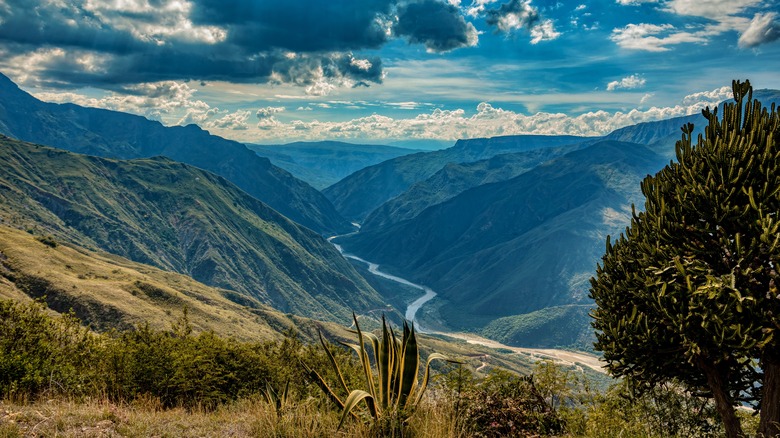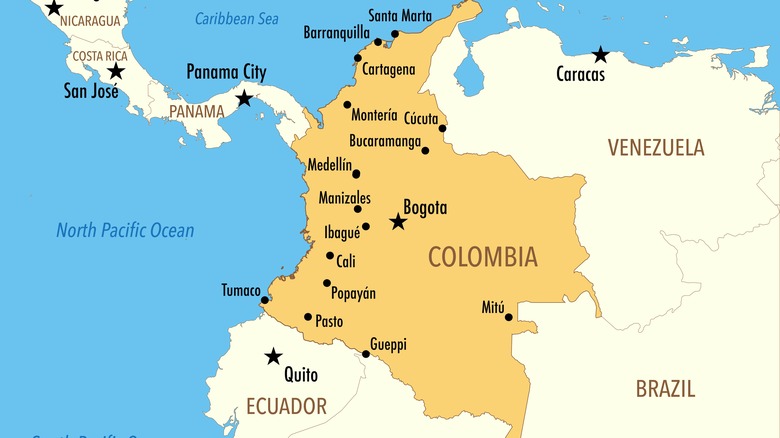These Mysterious 6,000-Year Old Remains Might Tell The Story Of A Tribe That Disappeared
Genetics research has been fundamental in our understanding of human history, including this shocking twist in the story of human evolution. For decades now, scientists have pieced together the story of how the first people came to the Americas through innovative archeological and genetic research. However, bones uncovered in Colombia have thrown a wrench in the South American timeline. These bones are thought to be from a tribe who lived in the Bogotá Altiplano region for thousands of years. DNA from these bones, though, does not show any clear genetic link to modern or ancient Colombians.
This research was analyzed in a 2025 publication in the ScienceAdvances journal under the title "A 6000-year-long genomic transect from the Bogotá Altiplano reveals multiple genetic shifts in the demographic history of Colombia." It brought together an international team of researchers to determine what happened to this mysterious tribe.
Until now, scientists knew surprisingly little about the ancient genetic history of Colombia. While a few studies had looked at mitochondrial DNA, which is passed down from mothers, no one had analyzed full genomes from this region. The team studying these remains, which are as old as 6,000 years ago, wanted to fully piece together the genetic history of this region including where these people came from and how they connect to modern-day residents of South America.
The research done into these Colombian remains
To uncover the genetic links from this tribe, the research team analyzed ancient remains stored in National University of Bogotá collection. They extracted DNA from 21 individuals found across five archaeological sites in the Colombian highlands. Using scans and fine dental drills to collect tiny samples of bone and tooth powder, the researchers were then able to run analysis in a lab and reconstruct the genetic profiles.
Once the DNA was sequenced, the researchers compared it against existing genetic data to see where these ancient individuals fit in. They discovered that some of the individuals were distantly related, which the team believes meant they lived in smaller, tight-knit communities. But most surprisingly, they realized that these people didn't belong to any of the known early migrations that spread through South America. Instead, their genetic lineage appeared much older, perhaps more closely related to the original genetic foundations of other Indigenous South American populations, including ancient Venezuela and Panama.
Given that the DNA didn't match any specific modern or ancient tribe, the individuals seem to come from a distinct group that split off early in the population of the continent. In other words, they seem to be a long-lost branch of humanity that briefly thrived before fading away. It brings to mind the history-changing discovery that Homo Sapiens were not the first humans in North America.
What is to be learned from this research
On a broad scale, this research reshapes what we know about how ancient peoples moved through the Americas. This once-unknown lineage that lived in Colombia's highlands long before later civilizations emerged is important to piecing together Colombia's genetic history. These early people weren't directly related to other known migrations but instead belonged to a deeply rooted branch that split off during the earliest settlement of South America. When their genetics vanished, it was replaced by new groups in various waves of migration. The researchers believe this suggests a homeland of sorts in Central America which people migrated north or south from.
While this research sheds new light on the genetic history of ancient Colombia, there is still a lot to learn. For one, the current data comes from only the remains of 21 people. A larger sampling would be needed to get a more comprehensive genetic picture. Future studies using full genome sequencing could reveal far more about how these populations evolved and interacted.
Beyond that, the researchers want to analyze additional remains from different time periods. They also want to expand this work beyond just the Colombian highlands. Studying ancient genetic lines from western Colombia, Venezuela, and more could help piece together how these ancient migrations shaped the broader human story of South America. Research like this could one day even lead to another discovery of a new form of ancient human.


